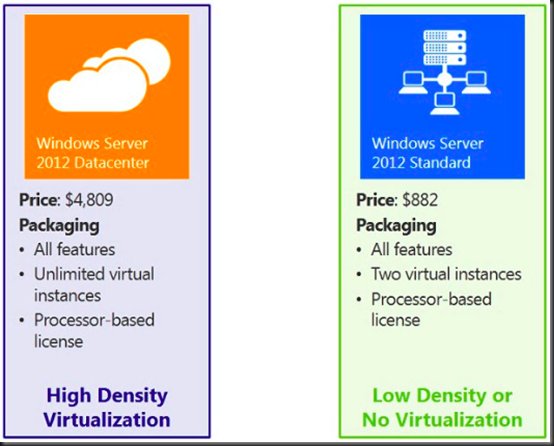
- #Windows server 2012 r2 standard license education upgrade
- #Windows server 2012 r2 standard license education full
- #Windows server 2012 r2 standard license education for windows 10
- #Windows server 2012 r2 standard license education windows 10
You can purchase a license for Windows Server 2012 R2 Standard from a Retail Outlet, a Distributor, or with the help of a Microsoft Partner. Purchase a license for Windows Server 2012 R2 Standard and the appropriate number of user and/or device client access licenses for your environment. Transition to Windows Server 2012 R2 StandardĪfter you have decided to transition from Windows Server Essentials to Windows Server 2012 R2 Standard, complete these two steps: Open the location where you saved the file, and then double-click the file to open it. Where eula path represents the location to which you want to save the EULA file for example: C:\ws8std_eula.rtf).

To view the EULA:ĭism /online /set-edition:ServerStandard /geteula: In addition, make sure that you read and understand the End User License Agreement (EULA) for Windows Server 2012 R2 Standard.

#Windows server 2012 r2 standard license education full
Without a full backup of the server, you cannot restore the server to the state that it was in prior to the transition. Before the transitionīefore transitioning from Windows Server Essentials to Windows Server 2012 R2 Standard, you should fully back up the server data. When transitioning from Windows Server Essentials to Windows Server 2012 R2 Standard, you will need to purchase the appropriate number and type of CALs for your environment (most customers purchase user CALs). This is different from Windows Server Essentials, which does not use the CAL model and does not come with any CALs. Windows Server 2012 R2 Standard requires a client access license (CAL) for each user or device in your environment. The client computer backup functionality will support backup of up to 75 devices. However, technical limitations for these features support a maximum of 100 user accounts and 200 devices. When your business needs exceed the limit, you can perform an in-place license transition from Windows Server Essentials to Windows Server 2012 R2 Standard to remain license compliant.Īfter you transition to Windows Server 2012 R2 Standard, the user account and devices limits are removed, but the features that are unique to Windows Server Essentials (such as the Dashboard, Remote Web Access, and client computer backup) still remain available. Windows Server Essentials supports up to 25 users and 50 devices. Windows Server 2016 content helps get you ready. Windows Server 2016 is the cloud-ready operating system that supports your current workloads while introducing new technologies that make it easy to transition to cloud computing. See this guide on pastebin.Transition from Windows Server Essentials to Windows Server 2012 R2 StandardĪpplies To: Windows Server 2016 Essentials, Windows Server 2012 R2 Essentials, Windows Server 2012 Essentials # convert to datacenter from datacenter eval (when shown as possible target above)ĭism.exe /online /set-edition:serverdatacenter /productkey:WX4NM-KYWYW-QJJR4-XV3QB-6VM33 /accepteula Test activation of Remote Desktop licenses (not for production use!) cd %windir%\system32Ĭscript slmgr.vbs /ato Changing the Windows Server version from Evaluation to the Full release using VLK # what do we have? If you’re about to use a VLK, you are probably going to be needing these commands.
#Windows server 2012 r2 standard license education upgrade
If you get a message saying you’re unable to upgrade because of error 0xC03F6506 or 0xC004F069, see this post.
#Windows server 2012 r2 standard license education windows 10
What you can do is enter the Windows 10 Pro upgrade key, VK7JG-NPHTM-C97JM-9MPGT-3V66T, let it upgrade, and then enter the VLK.
#Windows server 2012 r2 standard license education for windows 10
If you enter a VLK key for Windows 10 Pro on Windows 10 Home, it will not be accepted. Windows Server 2008 for Itanium-Based Systems

Windows Server 2008 Datacenter without Hyper-V Windows Server 2008 Enterprise without Hyper-V Windows Server 2008 Standard without Hyper-V


 0 kommentar(er)
0 kommentar(er)
